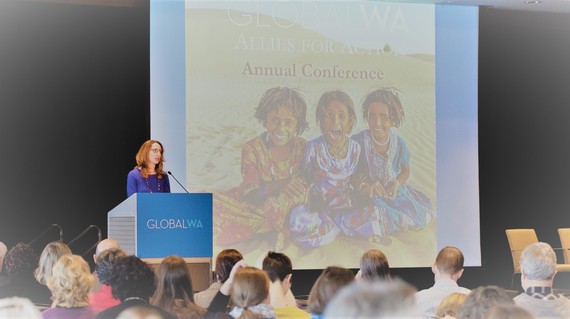There’s something in the water surrounding the Emerald City. Somehow the grey clouds, green trees, clouds, lakes, and ocean here seem to create a vortex of innovation that does more than pump out some of the world’s most recognizable corporate brands. It’s saving the world, too.
My contention? The same pragmatic, customer-focused engineering spirit from companies like Microsoft, Boeing, Tableau, and Amazon bring a data-driven and scientific-method driven approach to solving problems. Real problems. Not like Silicon Valley’s latest solution to create “an Uber for weed”, but rather global problems live poverty, inequalities, injustices, and education. Organizations here work to put reliable bikes into the hands of hundreds of thousands of farmers living in areas with infrastructure or provide sustainable menstrual education and hygiene supplies to women in rural areas that end up increasing school attendance by dramatic numbers. New clean water technology, financing models, and investments are on display here. Even the toilets are pushing boundaries.
At the center of this is Global Washington. Its 2016 Global Conference Seattle-based innovators for a one day event to drive progress through powerful partnerships. Or, as Global Washington’s Executive Director shared
“The 2016 conference theme, ‘Allies for Action’ represents the challenges and opportunities of business and non-profit partnerships, leveraging the best of both sectors to improve lives in developing countries. In the Pacific Northwest this also means bringing an entrepreneurial spirit to development and a focus on impact.”
Keynotes from Microsoft Philanthropies’ Corporate Vice President Mary Snapp, Mercy Corps Vice President of Humanitarian Leadership and Response Michael Bowers, and Costco Wholesale Corporation’s Assistant General Merchandise Manager of Global Sourcing Sheri Flies painted a clear picture of what it means to operate in the sustainable development industry, and how to build more effective partnerships in a way that fuels sustainable innovation.
Perhaps Cliff Schmidt, Executive Director of Literacy Bridge said it best
“We are here for the outcomes."
So how do you create real outcomes through partnerships?
These lessons from the Global Washington conference will help:
1: Start with Real Needs and Local Problems
Too often, people and organizations try and develop solutions without local insight. But true innovation tends to come from people with a local understanding of the existing solutions and problems. Jane Meseck of Microsoft Philanthropies shared that her team started by, and continues to operate by, asking how it can best support its partners. She reflected on a moment in 1997 when she was reviewing needs from nonprofits and saw them asking for help with websites and IT, not just Microsoft software. This led the evolution and roll out of not only software donations, but also “Tech Talent for Good” and other volunteering platforms.
When creating partnerships, don’t force your own agenda. Instead, take the time to understand real needs and then align your resources there.
2: Apply Rigor to Your Products and Process
Dave Neiswander, of World Bicycle Relief, shared how its founders brought the same business and engineering rigor from the for-profit sector to this nonprofit and its partnerships. Like most successful innovations, their work started by first spending time in the field. The founders realized that in places with poor infrastructure, local residents were still looking for ways to move and transport goods efficiently. This created a huge demand for bicycles, however, the companies that were attempting to sell there thought that the poorer areas required cheaper bikes with low quality components. However, the founders of WBR saw that the market was not meeting the needs in these areas, so they worked locally to continually improve the types of bikes that were valued in the area. WBR has now helped get over 330,000 bikes are across 18 countries.
As WBR has shown, good ideas aren’t enough. You need to keep working with your partners rigorously to ensure your work actually creates an impact and serves the people it has been designed with.
3: Find Allies Committed to Action
In a more personal panel session, Chris Jochnick, CEO of Landesa, said that his superpower is impatience, and that it’s important that we all be impatient when working in this field. As an example, in the interviews he leads for potential applicants, he asks “tell me about a time you went around the rules to deliver results”. Just like you need team members to push boundaries, you need need partners to push your boundaries, too.
Find partners that want to make things happen, not just partners that want your brand name on their websites.
4: Create 360-Degree Relationships with Your Partners
Akhtar Badshah, Director of Catalytic Innovators Group, shared that oftentimes, partnerships aren’t natural for organizations to pursue. Often times they’ll even slow down with fears of exposing trade secrets, or in the nonprofit sector, competition over grants. As such, many organizations have to actively force themselves to partner. This hesitancy towards building partnerships can result in partnerships being created to only overlap on one specific issue. However, in order for partnerships to succeed, you must find partners that also align in mission, measurement, culture, process, competencies, and even the tools you use. Dave Neiswander of WBR called this “creating 360-degree relationships with your partners”.
5: Report on Things That Matter (In Real Time)
Too often, reports are shared after a program is finished to analyze its effectiveness. While real time reporting is challenging, advancements in technology, especially mobile apps, and tools like Tableau make it very possible. Neal Myrick, Executive Director of the Tableau Foundation, shared that its foundation now uses a “Living Annual Report” to always show up-to-date information about its work and progress.
Pota Vida PotaVida creates hardware and software solutions that bring data-driven decision making to aid and disaster relief. Partners need to do the same, and effective partnerships are built when they can also clearly and easily report with each other in real time.
6: Build the Right Team and Staff it With the Right People
At the end of the day, people make up partnerships. It takes work, but it is important to invest time and resources to have the right people on the partnerships team, and that they have resources to make things happen.
7: Always Remember the People You're Trying to Benefit
Short term partner, financial, and donor pressures often cause organizations and partnerships to adopt short-term thinking, but it’s critical that we fight this pressure. It’s vital that all organizations continue to focus on the beneficiaries they, and their partnerships, are working to impact.
In Summary
Every year, Global Washington awards a Global Hero Award. This year, it went to Bill Neukum of the World Justice Project.
In his speech, Bill shared that “Civil society organizations are more important than ever”, and so are the partnerships between them. To ensure they work, remember these tips:
- Start with Real Needs and Local Problems
- Apply Rigor to Your Products and Process
- Find Allies Committed to Action
- Create 360-Degree Relationships with Your Partners
- Report on Things That Matter (In Real Time)
- Build the Right Team and Staff It with the Right People
- Always Remember the People You’re Trying to Benefit
For more about the great work that Global Washington does to convene changemakers in Seattle and foster innovation, follow them on Twitter.

